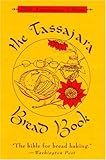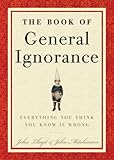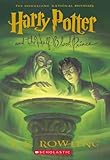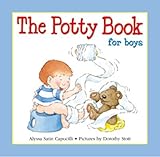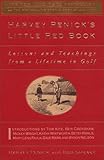
The first couple chapters of this book abound in grammatical and spelling errors, which I would never have expected from this publisher. At some point around the second chapter the errors cease and the writing style changes dramatically, which is fortunate because I probably would not have finished the book otherwise.
The author presents the case that the US economy will suffer from high inflation, the dollar will devalue, and gold and other commodities provide a good hedge against this trend. The author occasionally presents some historical facts to back up his arguments, but there are no references to outside material and no counter-arguments are explored. For instance, while it may be true that surging energy and commodity costs caused "real" inflation in the summer of 2008 that was much higher than official government figures suggested, the possibility of this trend suddenly reversing was not investigated.
The current economic situation is quite different from the one the author was experiencing when he wrote this book. This book was written at the peak of the energy bubble of 2008. Since then, the price of oil has plummeted to one-third its peak price and remains at a relatively low level. The author speculates that oil prices will soar, real inflation will be double digit, and the price of gold will rise to many thousands of dollars per ounce. A major catalyst for this outcome, according to the author, is the devaluation of the dollar caused mainly by the US government stimulus and bailout packages. While this overall scenario certainly still seems plausible, the author does not address the fact that most other major governments are also stimulating their own economies.
The later chapters of the book provide some suggestions about how to invest in a high-inflation, weak dollar environment. The suggestions basically boil down to buying commodities and foreign equities. Conveniently for the reader, the author mentions several times that his company provides services to assist you in these investments. When I read this, I suddenly understood that this entire book was little more than an advertisement for his investment service.
This book contains obtrusive grammatical errors (e.g.: "the the"), no references to historical data to back up the arguments presented, a drastic change of writing style somewhere around the second chapter, an argument for an economic outcome that strongly favors his investment company (the repeated mention of which rings of salesmanship), and no consideration of alternate outcomes.
Given the fact that the current economic situation is drastically different from that of August 2008, is it even worthwhile to read this book? Perhaps, for one or two reasons. The first reason is to better understand where to invest if you are in a high inflationary environment. Unfortunately, this book presents only weak references to historical data and you are forced to either believe whatever the author says or look elsewhere for facts. Some charts and tables with references would have helped a lot here. The second reason to read this book is to learn the importance of diversification. It is easy to believe that the short to mid-term future will look a lot like the present, but as we have seen, the global economic situation can change suddenly. The book does little or nothing to promote diversification, but it is precisely because this book presents arguments for an economic outcome that seems contrary to the current reality that the importance of diversification is felt.
Buy The Little Book of Bull Moves in Bear Markets: How to Keep Your Portfolio Up When the Market is Down (Little Books. Big Profits)!
